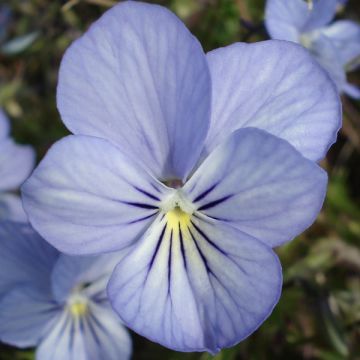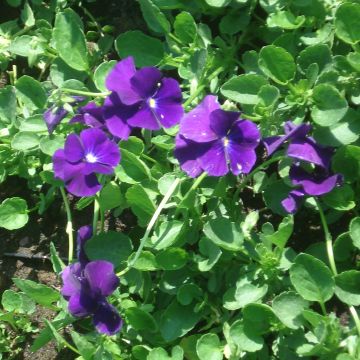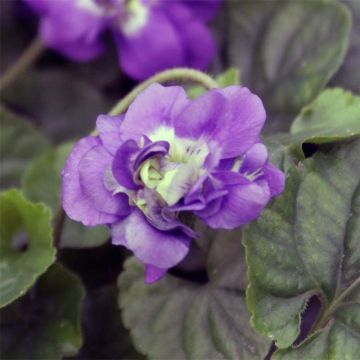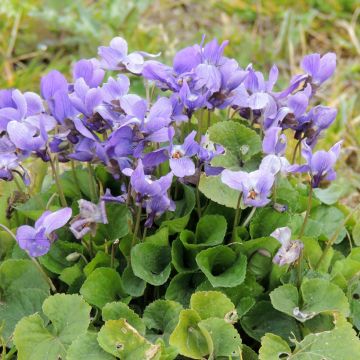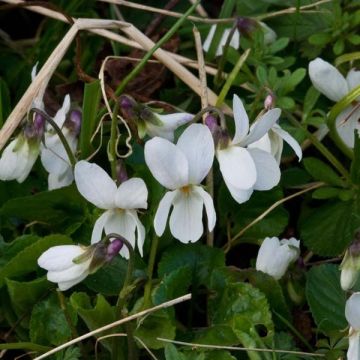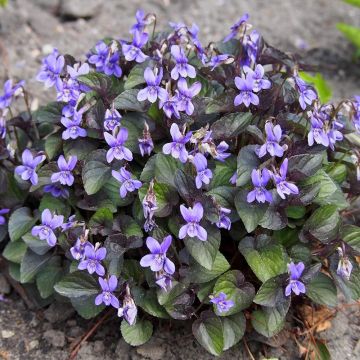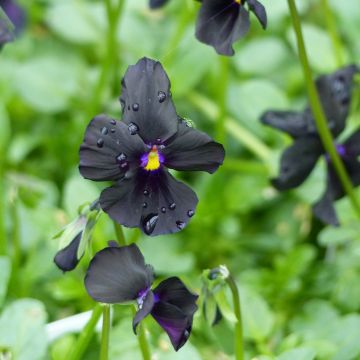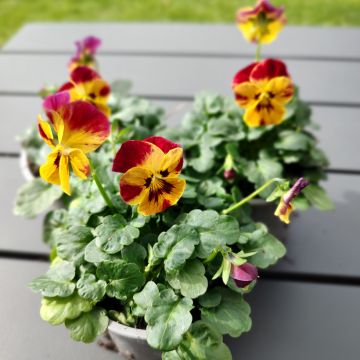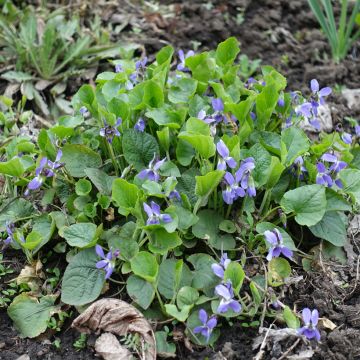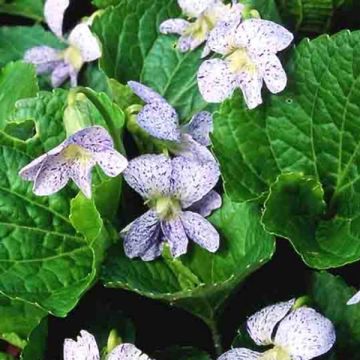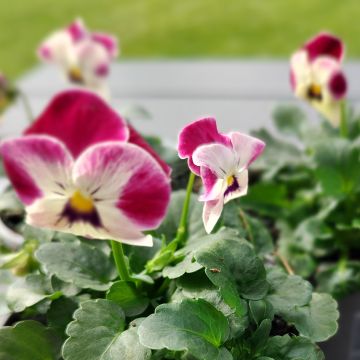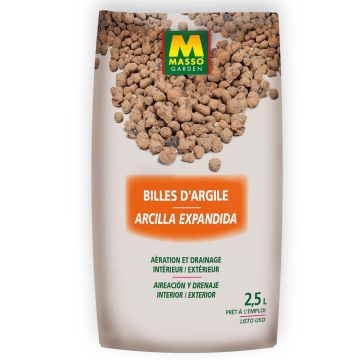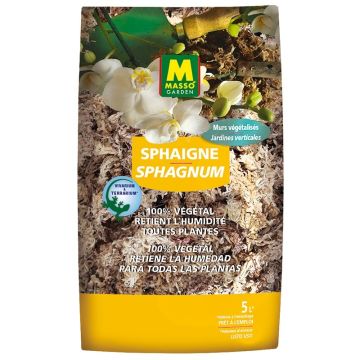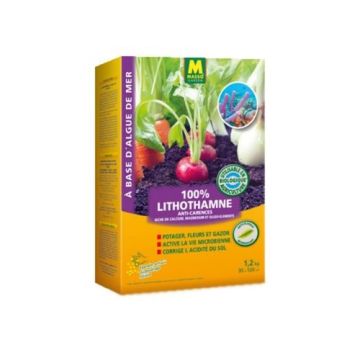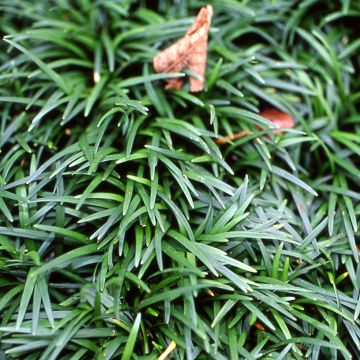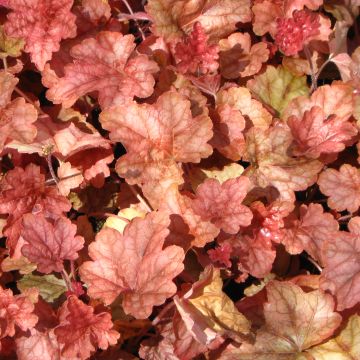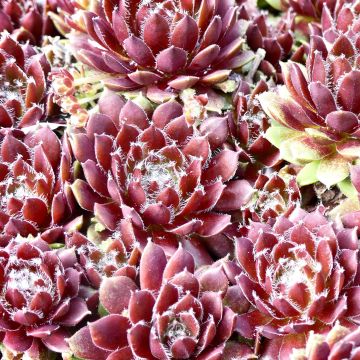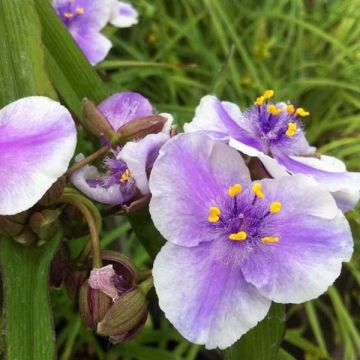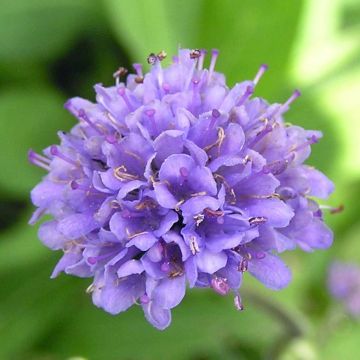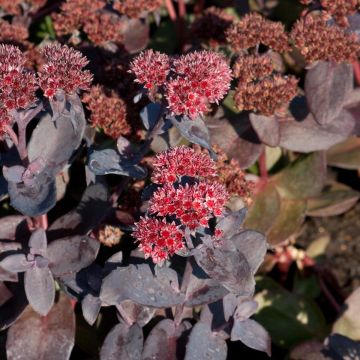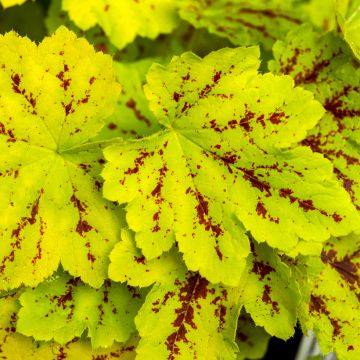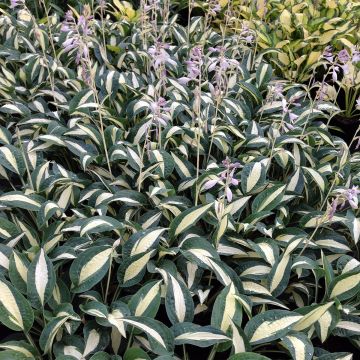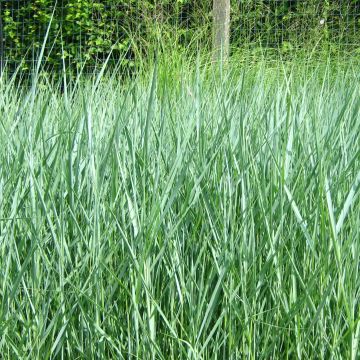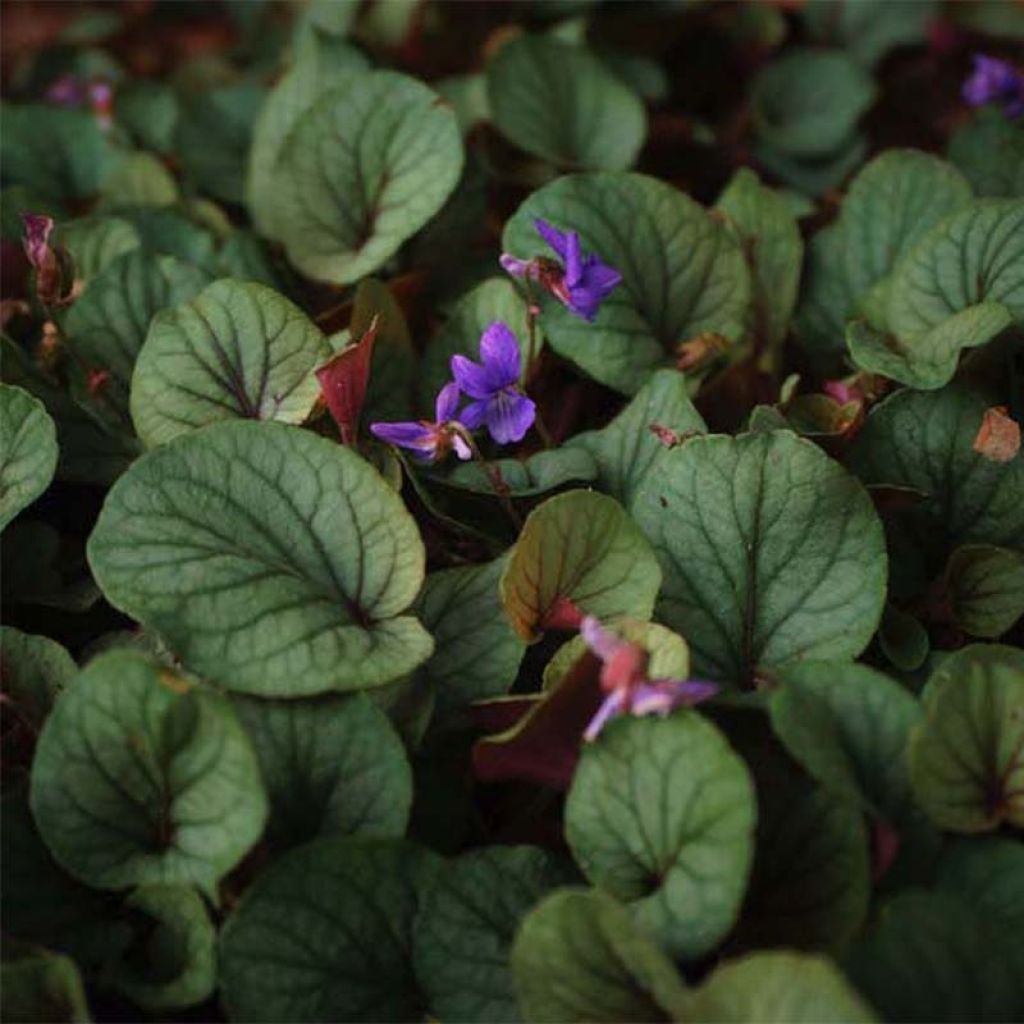

Viola walteri Silver Gem
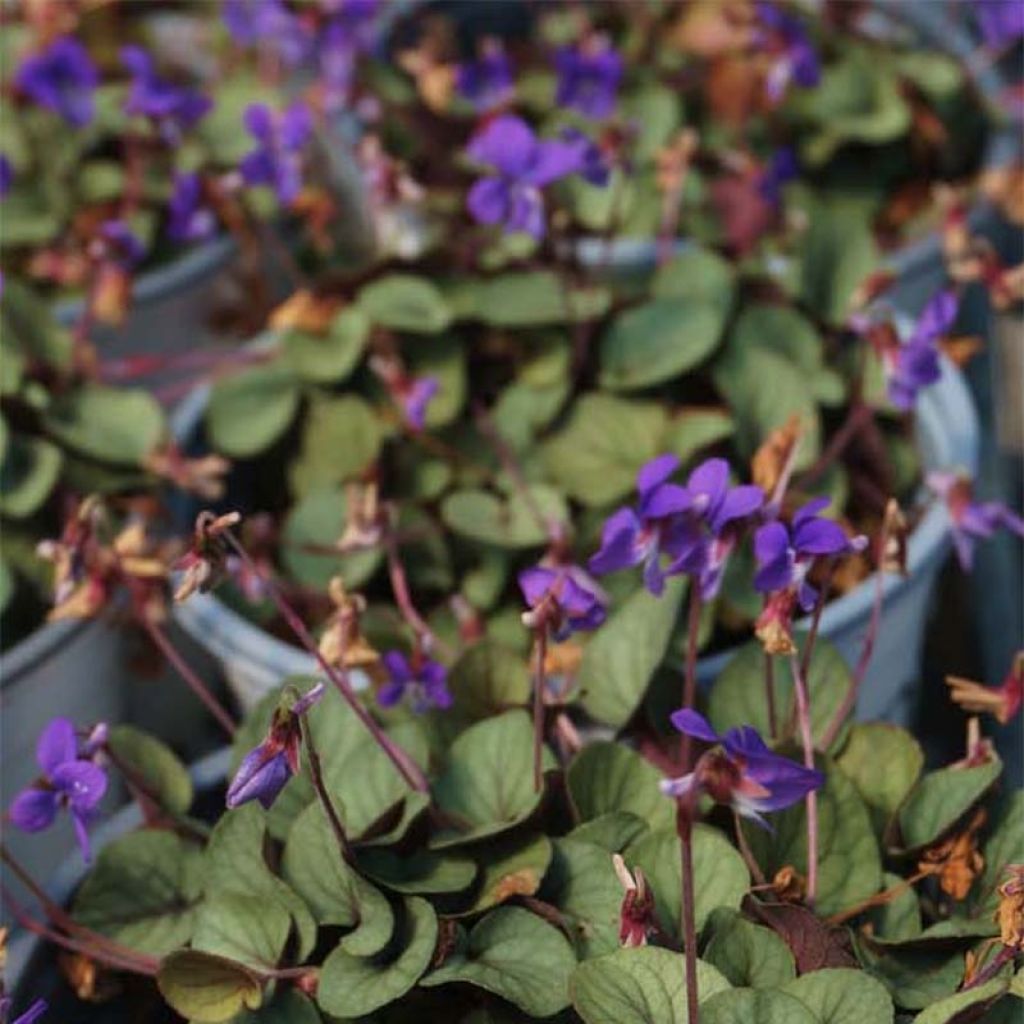

Viola walteri Silver Gem
Viola walteri Silver Gem
Viola walteri Silver Gem
Prostrate blue violet, Prostrate southern violet
This violet, which I adore, is surprising: in my Mediterranean garden, it is magnificent with its wide blooms in the shade, but it quickly withers when planted in the ground next to said blooms!
Mi , 18/03/2024
Why not try an alternative variety in stock?
View all →This plant carries a 12 months recovery warranty
More information
We guarantee the quality of our plants for a full growing cycle, and will replace at our expense any plant that fails to recover under normal climatic and planting conditions.
From €5.90 for pickup delivery and €6.90 for home delivery
Express home delivery from €8.90.

Does this plant fit my garden?
Set up your Plantfit profile →
Description
Viola walteri 'Silver Gem' is a very different violet that is never found in our gardens: it was collected in 2003 in the undergrowth on the south side of the Appalachian Mountains. It is a small creeping plant that stands out for its beautiful silver-tinted foliage highlighted by dark veins. It blooms early in spring, in the form of tiny blue-violet flowers and slowly forms a precious groundcover that requires no maintenance. Perfect for covering the base of deciduous trees and shrubs, it will also thrive in a shady rockery, and will sometimes self-seed wherever it pleases.
Viola walteri, from the Violaceae family, is a plant native to the mountainous areas of the southeastern U.S.A. It is found in deciduous forests, on limestone soil, most often in rocky and dry habitats. The 'Silver Gem' cultivar was selected for the beauty of its foliage with silver reflections.
It is a prostrate perennial plant with short rhizomes composed of creeping violet stems that root at the nodes. It forms a tuft 10 cm (4in) high and 25 cm (10in) wide, which will spread over time into a dense carpet. Its foliage is deciduous in cold climates, but semi-evergreen in our milder regions. The stems bear heart-shaped leaves, with slightly toothed edges and long petioles. The lamina is silver in colour, with dark olive green or more or less violet veins. The undersides of the leaves are violet. Flowering occurs in spring, earlier or later depending on the climate, usually in March-April. It can sporadically flower again until autumn. The leafy stems are adorned with tiny blue-violet flowers that stand out well against the silver foliage. After pollination, the flowers give way to capsules containing tiny seeds.
Violets, along with the first tits, announce the end of winter. This one will be one of the first to bloom, in shaded rockeries and undergrowth. 'Silver Gem' violets can be planted anywhere: at the base of trees, hedges, in and on retaining walls, in pots or in a window box, to have them right under your nose while staying warm. In general, violets, just like liverworts, are wandering plants, rebellious to being confined. You plant them in one place, only to find them elsewhere and much more beautiful the following year. In a natural garden, you can associate Viola walteri 'Silver Gem' with Phlox divaricata, Chrysogonum virginianum, Iris cristata, Silene regia, or even Waldsteinia ternata, for example.
Report an error about the product description
Viola walteri Silver Gem in pictures
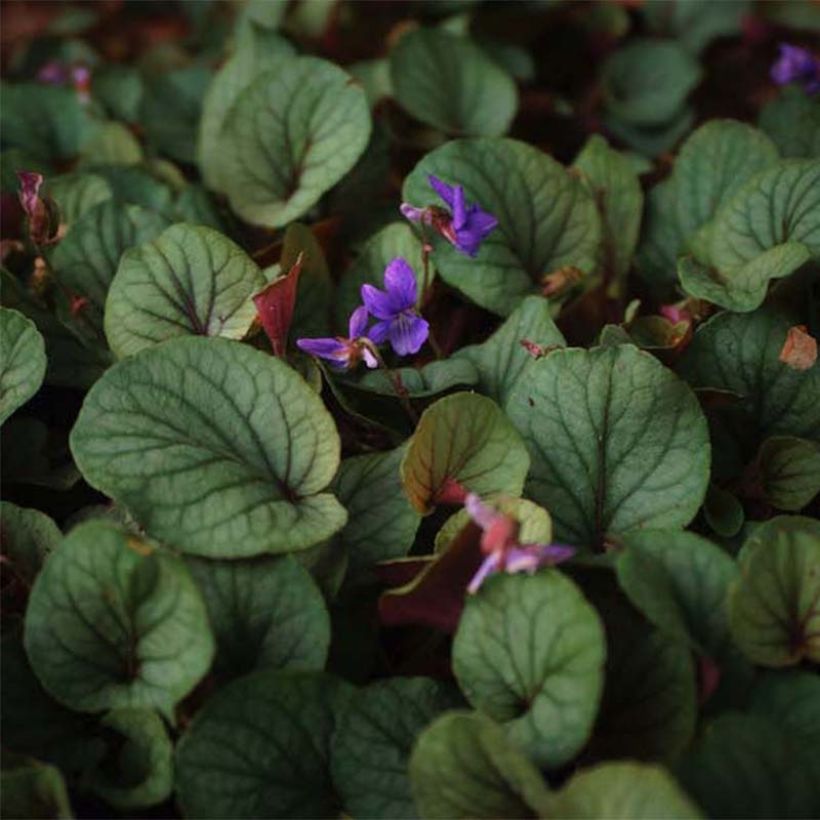

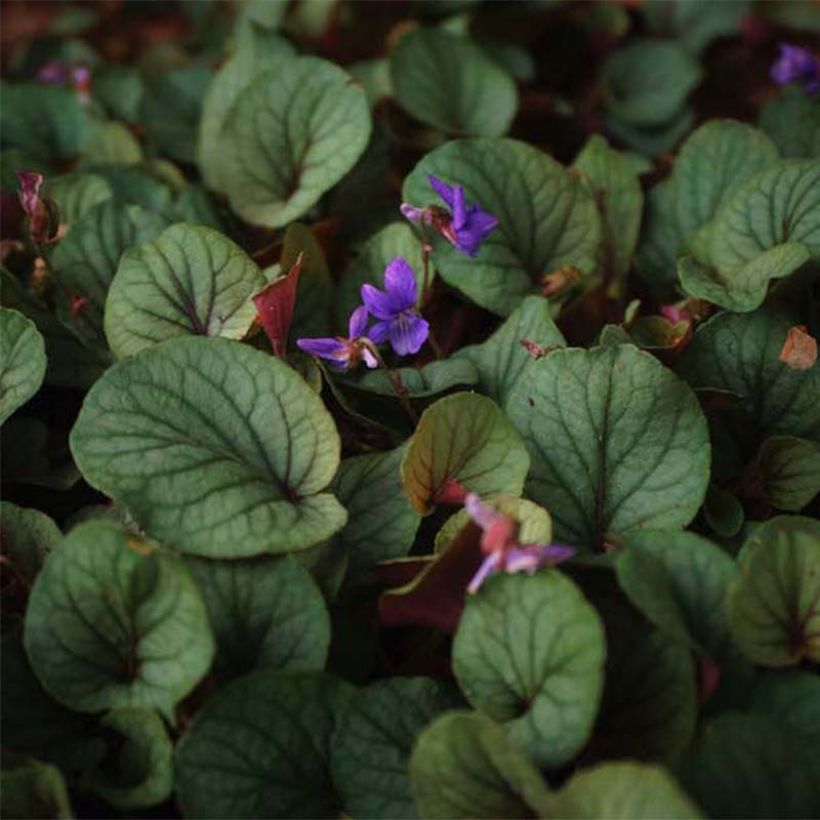

Flowering
Foliage
Plant habit
Botanical data
Viola
walteri
Silver Gem
Violaceae
Prostrate blue violet, Prostrate southern violet
Rocky Mountains
Other Viola - Violets
Planting and care
Viola walteri 'Silver Gem' violet prefers partial shade, fertile and well-drained soils rich in humus. It tolerates morning sun as well as dense shade. Once established, it tolerates some drought. Undemanding, it will thrive in slightly acidic, neutral or even alkaline soil. Rocky mountain soils or on the contrary sandy or loamy soils are also suitable for it.
This violet requires no maintenance and is ignored by insects and diseases.
Planting period
Intended location
Care
-
, onOrder confirmed
Reply from on Promesse de fleurs
Coloured foliage perennials
Haven't found what you were looking for?
Hardiness is the lowest winter temperature a plant can endure without suffering serious damage or even dying. However, hardiness is affected by location (a sheltered area, such as a patio), protection (winter cover) and soil type (hardiness is improved by well-drained soil).

Photo Sharing Terms & Conditions
In order to encourage gardeners to interact and share their experiences, Promesse de fleurs offers various media enabling content to be uploaded onto its Site - in particular via the ‘Photo sharing’ module.
The User agrees to refrain from:
- Posting any content that is illegal, prejudicial, insulting, racist, inciteful to hatred, revisionist, contrary to public decency, that infringes on privacy or on the privacy rights of third parties, in particular the publicity rights of persons and goods, intellectual property rights, or the right to privacy.
- Submitting content on behalf of a third party;
- Impersonate the identity of a third party and/or publish any personal information about a third party;
In general, the User undertakes to refrain from any unethical behaviour.
All Content (in particular text, comments, files, images, photos, videos, creative works, etc.), which may be subject to property or intellectual property rights, image or other private rights, shall remain the property of the User, subject to the limited rights granted by the terms of the licence granted by Promesse de fleurs as stated below. Users are at liberty to publish or not to publish such Content on the Site, notably via the ‘Photo Sharing’ facility, and accept that this Content shall be made public and freely accessible, notably on the Internet.
Users further acknowledge, undertake to have ,and guarantee that they hold all necessary rights and permissions to publish such material on the Site, in particular with regard to the legislation in force pertaining to any privacy, property, intellectual property, image, or contractual rights, or rights of any other nature. By publishing such Content on the Site, Users acknowledge accepting full liability as publishers of the Content within the meaning of the law, and grant Promesse de fleurs, free of charge, an inclusive, worldwide licence for the said Content for the entire duration of its publication, including all reproduction, representation, up/downloading, displaying, performing, transmission, and storage rights.
Users also grant permission for their name to be linked to the Content and accept that this link may not always be made available.
By engaging in posting material, Users consent to their Content becoming automatically accessible on the Internet, in particular on other sites and/or blogs and/or web pages of the Promesse de fleurs site, including in particular social pages and the Promesse de fleurs catalogue.
Users may secure the removal of entrusted content free of charge by issuing a simple request via our contact form.
The flowering period indicated on our website applies to countries and regions located in USDA zone 8 (France, the United Kingdom, Ireland, the Netherlands, etc.)
It will vary according to where you live:
- In zones 9 to 10 (Italy, Spain, Greece, etc.), flowering will occur about 2 to 4 weeks earlier.
- In zones 6 to 7 (Germany, Poland, Slovenia, and lower mountainous regions), flowering will be delayed by 2 to 3 weeks.
- In zone 5 (Central Europe, Scandinavia), blooming will be delayed by 3 to 5 weeks.
In temperate climates, pruning of spring-flowering shrubs (forsythia, spireas, etc.) should be done just after flowering.
Pruning of summer-flowering shrubs (Indian Lilac, Perovskia, etc.) can be done in winter or spring.
In cold regions as well as with frost-sensitive plants, avoid pruning too early when severe frosts may still occur.
The planting period indicated on our website applies to countries and regions located in USDA zone 8 (France, United Kingdom, Ireland, Netherlands).
It will vary according to where you live:
- In Mediterranean zones (Marseille, Madrid, Milan, etc.), autumn and winter are the best planting periods.
- In continental zones (Strasbourg, Munich, Vienna, etc.), delay planting by 2 to 3 weeks in spring and bring it forward by 2 to 4 weeks in autumn.
- In mountainous regions (the Alps, Pyrenees, Carpathians, etc.), it is best to plant in late spring (May-June) or late summer (August-September).
The harvesting period indicated on our website applies to countries and regions in USDA zone 8 (France, England, Ireland, the Netherlands).
In colder areas (Scandinavia, Poland, Austria...) fruit and vegetable harvests are likely to be delayed by 3-4 weeks.
In warmer areas (Italy, Spain, Greece, etc.), harvesting will probably take place earlier, depending on weather conditions.
The sowing periods indicated on our website apply to countries and regions within USDA Zone 8 (France, UK, Ireland, Netherlands).
In colder areas (Scandinavia, Poland, Austria...), delay any outdoor sowing by 3-4 weeks, or sow under glass.
In warmer climes (Italy, Spain, Greece, etc.), bring outdoor sowing forward by a few weeks.

































